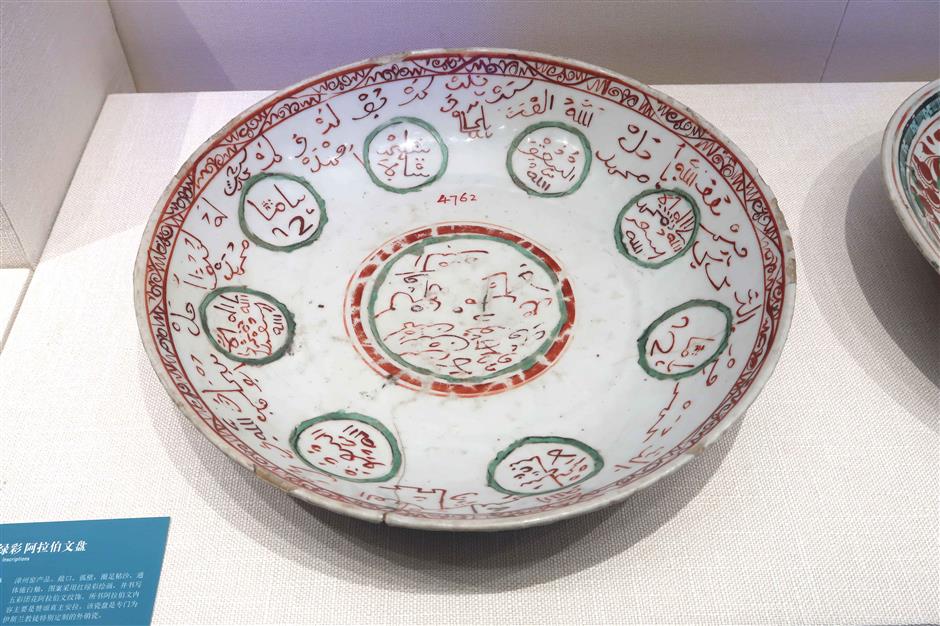Shipwreck 'treasures' trace maritime history

Two models of Chinese ships are on display. Shachuan (sand boat) on the left will be exhibited at the People’s Square Metro station in July.
The China Maritime Museum in the Lingang area of Pudong is currently hosting a collection of 242 artefacts, mostly ceramics, recovered from shipwrecks.
The exhibition, entitled “China and the World,” focuses on 11 shipwrecks and the cargoes sunk with them, ranging from the Tang Dynasty (618-907) to the Qing Dynasty (1644-1911).
“Many merchant ships were destroyed by storms or other disasters,” said Mao Min, who works at the museum. “Shipwrecks tell a lot about the commercial history of ancient China and its trade links with the world.”
All shipwrecks, domestic or foreign, carried cargoes of ceramics made in China. One of them was the famous Belitung shipwreck found in Indonesia. It’s believed to have been an Arabic merchant ship dating back to 9th century. The exhibition displays 12 ceramics recovered from the ship.
“From the discoveries, we get a glorious glimpse of the Tang era,” said Mao. “Some 67,000 artefacts were found in the shipwreck, 98 percent of which were ceramics made in China.”
The exhibition also includes artefacts made abroad. A Persian pot found in Yangzhou, a city in Jiangsu Province, is considered a premier display item.
“There are only four of such ‘imports’ from the Tang Dynasty,” Mao said of the pot. “They were preserved and found in China.”
Ceramics tell us much about the prevailing cultures during which they were made.
“As dynasties changed, the recovered ceramics show increasing cultural diversity,” Mao said.

A blue and white porcelain kettle from the Qing Dynasty.
He cited a plate with glazed Arabic script found in the city of Zhangzhou in Fujian Province, a relic from the Ming Dynasty (1368-1644).
“It was obviously customized for western Asia clients,” said Mao. “The pattern of Chinese ceramics had a great impact on ceramic works from around the world. Many foreign countries copied our style of the time.”
In addition to ceramics, the museum also displays the restored models of the ships before they sank.
Alongside them is a model of Baochuan, or Treasure Ship, that carried the famous Ming Dynasty explorer Zheng He (1371-1433) on voyages that extended as far as Africa.
“On July 11, Shanghai will host the Maritime Day of China,” said Huang Jiaping, director of the museum’s operations department. “For the event, the museum will coordinate with Shanghai Metro to showcase one of our ship models in the hall of the People’s Square Station.”
It is a model of a shachuan, or sand boat, one of four typical ship models of ancient China that plied essentially on Yangtze River.

A plate made during Ming Dynasty with Arabic lines on the glaze.
Since Tang Dynasty, sand boats have been the major carrier of river cargos in and out of Shanghai for almost a thousand years.
A sand boat is part of the emblem of Shanghai, symbolizing the city’s long history as a port.
Yang Zheng, a volunteer at the museum, said the current exhibition is very informative and interesting.
“It gives us a lot of information about ancient ships and ceramics,” said Yang.
“It’s another way of looking at history.”
Huang said most of the museum’s visitors are students on field trips, said Huang. The museum is capable of handling more than 8,000 visitors at one time.
The usual entry fee of 50 yuan (US$8) will be waived today and reduced by half this weekend to mark the International Museum Day.















